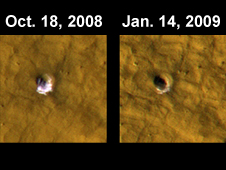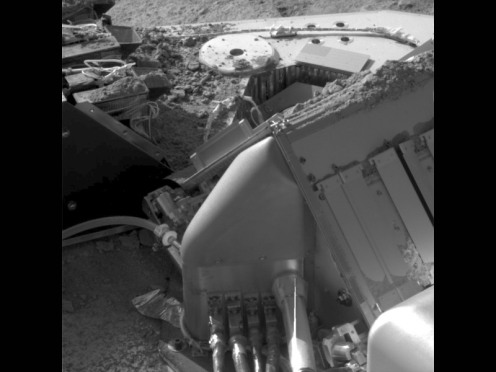
New findings of ice under Martian soil at suggest the Viking Lander 2, digging into mid-latitude Mars in 1976, might have struck ice if it had dug 10 centimeters (4 inches) deeper.
NASA’s Mars Reconnaissance Orbiter has revealed frozen water hiding just below the surface of mid-latitude Mars. The spacecraft’s observations were obtained from orbit after meteorites excavated fresh craters on the Red Planet.
Scientists controlling instruments on the orbiter found bright ice exposed at five Martian sites with new craters that range in depth from approximately half a meter to 2.5 meters (1.5 feet to 8 feet). The craters did not exist in earlier images of the same sites. Some of the craters show a thin layer of bright ice atop darker underlying material. The bright patches darkened in the weeks following initial observations, as the freshly exposed ice vaporized into the thin Martian atmosphere. One of the new craters had a bright patch of material large enough for one of the orbiter’s instruments to confirm it is water-ice.
The finds indicate water-ice occurs beneath Mars’ surface halfway between the north pole and the equator, a lower latitude than expected in the Martian climate.
“This ice is a relic of a more humid climate from perhaps just several thousand years ago,” said Shane Byrne of the University of Arizona, Tucson.
Read the full press release –>
Posted in mars, phoenix on mars
Tags: mars, phoenix lander, viking lander, water ice


